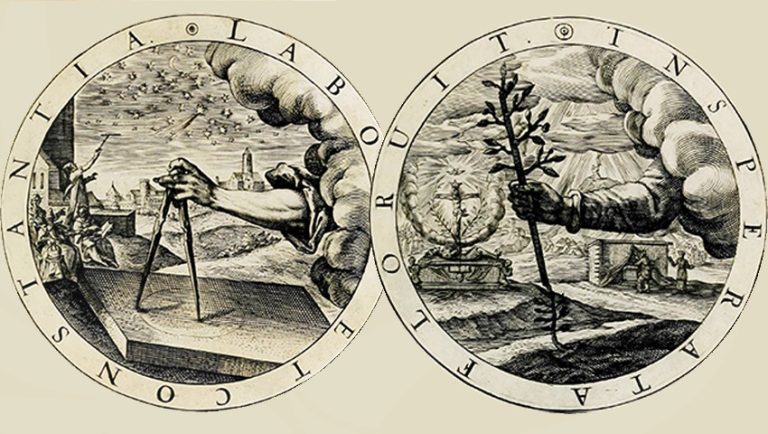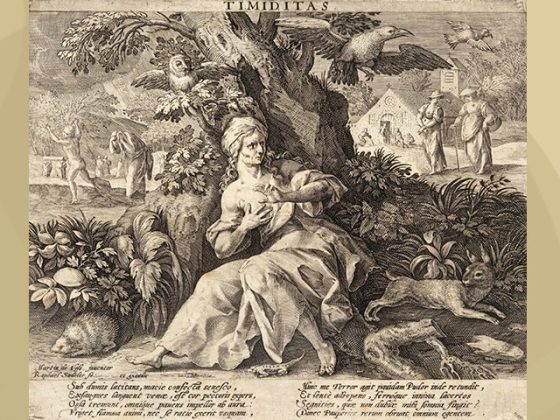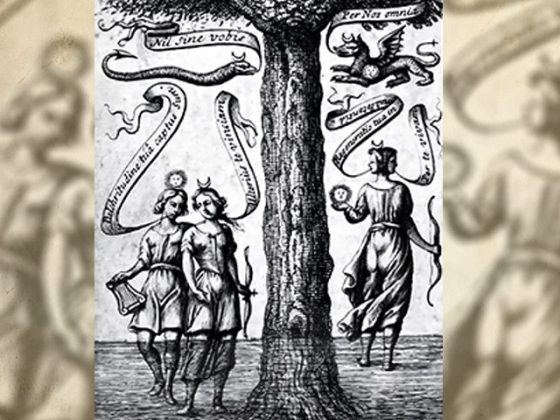Dear reader friends:
I am sending you two emblems or engravings, number 9 and number 59, both from the book Selectorum emblematum – ‘Selected Emblems' – written by the German poet Gabriel Rollenhagen (1583-1619) and illustrated by Crisjpin van de Passe (1594-1670) and Jan Jansson (1588-1664).
Both engravings contain a text in Latin and another in Old French.
LABORE ET CONSTANTIA
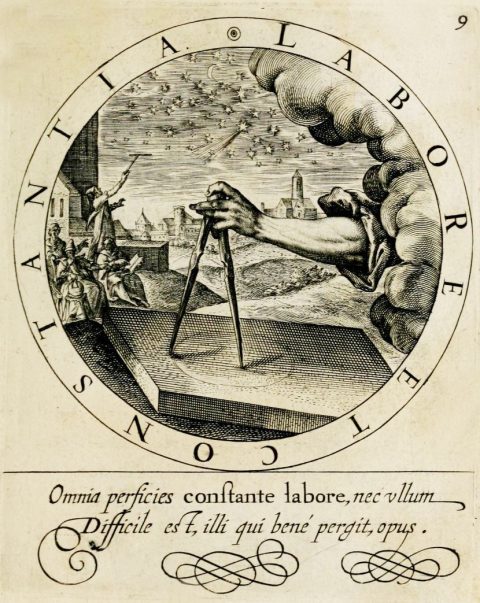
Omnia perficies constante labore, nec vllum
Difficile est, illi qui bené pergit, opus.
Translation: ‘With hard work and perseverance you will achieve everything, with constant effort, and no work is difficult for someone who perseveres well.'
Quand quelqu'un entreprend de faire un bel ouvrage
Il ne suffira pas de bien y labourer,
Mais il faut au labeur tousiours perseverer,
La constance embellit le labeur d'avantage
Translation: ‘When someone sets out to do a beautiful work, it will not be enough to work well, but one must always persevere in the work, for perseverance embellishes the work even more.'
In the center of our engraving we see an arm emerging from the clouds holding in one of its hands a compass with which it has drawn a circle. What does this mean?
The arm we mention represents the arm of the GREAT ARCHITECT OF THE UNIVERSE, who makes things perfect. His work is the very creation of which we are a part.
This image shows us the various resources that we must use when we want to do things with profundity, beauty and success. We refer to the WORK ON OURSELVES, related to the consummation of the inner GREAT WORK. That is why we see on one side a group of philosophers, scientists, artists, all trying to interpret the signs of the sky ─astrology─, etc., etc., etc.
Obviously, in the search for our true reality and identity we need to be persevering, we must not give up. Perseverance and constancy defeat our ANIMAL EGO when we strive to do things in the best way possible and bring about our radical change. The circle that we see drawn by the divine arm on the stone certainly points out to us the need to be precise and profound.
It is very interesting that the circular line is made on a stone. This reaffirms us in the search for the PHILOSOPHER’S STONE, the Golden Fleece, the BEING in Himself. One must avoid ─as the engraving tells us─ tedium, boredom; we need our psychological work to carry the ingredient of enthusiasm, the strength of our superior emotional center, so as not to fall into hopelessness and spiritual laziness. Without a doubt, perseverence will embellish the work that we really want to do on our spirit and our psyche.
Engraving Nº 59.
INSPERATA FLORUIT
─'It bloomed unexpectedly'─
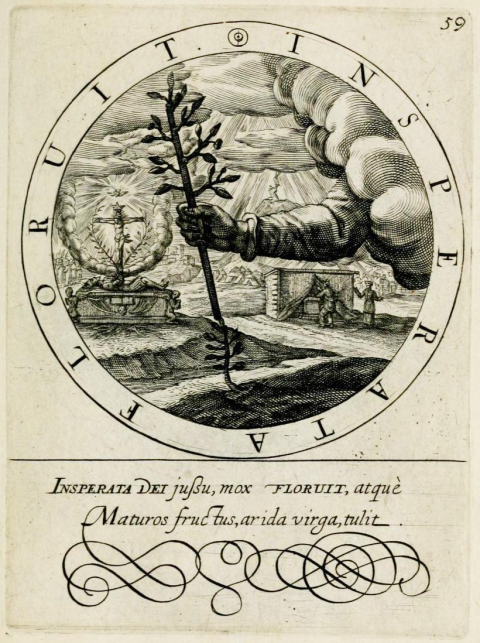
INSPERATA DEI justu, mox FLORUIT, atque
Maturos fructus, arida virga, tulit.
Translation:
‘Unexpectedly, by God's command, it soon blossomed, and the withered rod bore ripe fruit.'
Il ny a rien si seur que d'affoir esperance
Ferme au vouloir de Dieu, qui fait par sa bonte
Reussir nos dessains avecq prosperite
Quand parmi les malheurs nostre esprit moins y pense
Translation: ‘There is nothing so sure as to have firm hope in the will of God, who, by his goodness, causes our plans to prosper when, amidst misfortunes, our mind thinks less of them.'
In this other engraving we want to point out that the divine will is capable of provoking phenomena that we cannot even imagine.
First we see a person, on the right, trying to carry a corpse to a kind of tent. Everything is observed by a Master of wisdom.
On the other side of the engraving we see that supposed dead man lying on a kind of tombstone. From his belly we observe that the image of a crucifix emerges touching two olive branches. These are the two witnesses that the Bible cites and who stand before God. Such olive branches are the channels of IDA and PINGALA, through which the seed of man ascends when it is subjected to the alchemical transmutation of our studies ─this is the ARCANUM A.Z.F.─.
The dove of the Holy Spirit is at the top of the cross of the crucified one ─the intimate Christ─ to indicate that this entire process has his approval. Let us remember that the INNER GREAT WORK requires the concert of the three divine forces, namely: that of the Father, that of the Son, and that of the Holy Spirit.
The rod that the arm of divinity shows us again represents our spine. It is, in the common mortal, dry and fruitless, and is, in itself, our Tree of Life ─spiritually speaking─, which needs to bear its fruits, which is not possible without the help of the power of Vulcan and his forge: Sexual Magic.
An important detail is the one we can observe between the arm of God and a cloud in the sky. It is a kneeling character who raises a kind of censer as if wanting to burn incense to the heavens. This is there to indicate to us the need to make sacrifices when we try to be persevering in our mystical practices in order to bring about, precisely, our inner rebirth.
I end this description by adding some appropriate quotations for you:
“In what is good, for it to be a virtue, there must be perseverance.”
Quevedo
“Perseverance is the virtue by which all other virtues bear fruit.”
A. Graf
“Constancy is not in starting but in persevering”.
Leonardo da Vinci
“Victory belongs to the most persevering.”
Napoleon
“What is harder than stone? What is softer than water? Yet, soft water hollows out the hard stone.”
Ovid
PERFER ET OBDURA.
─'Endure and resist'─.
KWEN KHAN KHU


